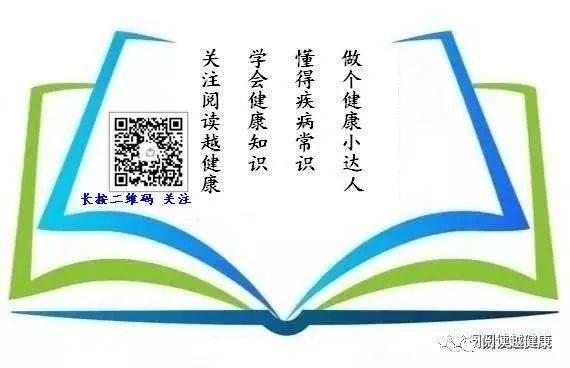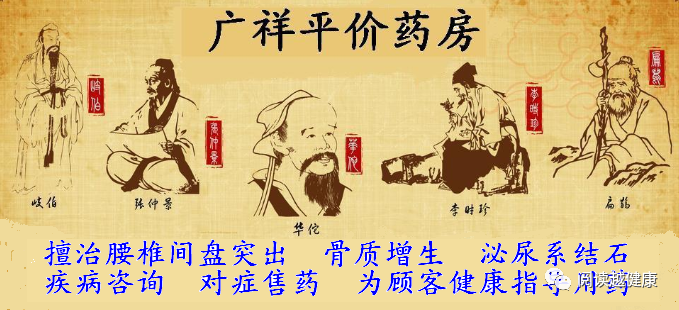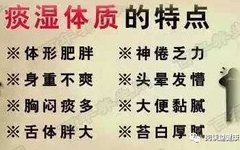
The phlegm-damp constitution refers to a condition where the functions of the internal organs are disordered, leading to the dysfunction of qi, blood, and body fluids, resulting in the accumulation of water and dampness, which transforms into phlegm and manifests as phlegm-dampness within the body. This condition is often characterized by obesity, fullness in the abdomen, chest tightness, excessive phlegm, easy fatigue, a heavy body feeling, a preference for rich and fatty foods, and a tongue that is swollen with a white, greasy coating.
1.Characteristics of Phlegm-Damp Constitution
Fatigue and lethargy: Individuals with a phlegm-damp constitution tend to have slower reactions, even blinking slower than others. They often have a blank expression and appear indifferent. Additionally, they frequently experience dizziness and a heavy head. If a person experiences these symptoms after middle age, such as persistent dizziness and a desire to sleep, it indicates a transition to a phlegm-damp constitution. This is due to poor digestion by the spleen and stomach, leading to an excess of phlegm-dampness that obstructs the clear yang. If these symptoms worsen after meals, accompanied by chest tightness and dizziness, it is crucial to consider whether phlegm-dampness is retained in the body.
Obesity and edema: Individuals with significant phlegm-dampness are prone to weight gain, and this is commonly observed in clinical practice. “Fat people often have phlegm-dampness, while thin people tend to have internal heat.” This is because water flows downward, and those with heavy phlegm-dampness often feel heavy in their bodies, with particularly heavy footsteps. When sitting, they tend to remain still, appearing cumbersome. This is due to the stagnation of phlegm-dampness in the skin and limbs.
Sticky mouth or mild thirst without a desire to drink: An interesting phenomenon in individuals with a phlegm-damp constitution is that they often feel slightly thirsty but do not want to drink water. This thirst does not indicate an absolute lack of water in the body but rather that the accumulated fluids have transformed into phlegm-dampness, failing to perform their intended function, resulting in a mild thirst. Drinking water can exacerbate the accumulation of phlegm-dampness in the body, leading to this peculiar phenomenon of thirst without a desire to drink.
Urination and tongue-pulse: Individuals with a phlegm-damp constitution often have cloudy urine and sticky stools, with difficulty in bowel movements. Their stools are often not dry and appear very sticky, making them hard to flush away. The tongue is typically swollen, and the coating is relatively thick. These are signs of phlegm-dampness obstructing the body, leading to excessive waste accumulation. The pulse is often slippery or soggy.

2.Causes of Phlegm-Damp Constitution
Congenital Endowment
Congenital endowment is the internal basis for the formation of phlegm-damp constitution. If parents have excessive phlegm in their bodies, the offspring may inherit this condition, leading to a phlegm-damp constitution from birth.
External Pathogenic Factors
Prolonged exposure to damp environments can adversely affect the spleen and stomach, leading to dysfunction in the metabolism of water and fluids, resulting in the accumulation of dampness and phlegm, which can easily form a phlegm-damp constitution.
Dietary Irregularities
Irregular eating habits, such as overeating or undereating, or a preference for unhealthy foods, along with a diet high in fats and sugars, can impair the spleen’s function, preventing timely digestion and transformation of food. This leads to the accumulation of phlegm and dampness in the body, obstructing the tissues and subcutaneous areas, thus contributing to the phlegm-damp constitution. Consuming excessive cold and frozen foods in youth can exacerbate this condition, leading to a deficiency in yang, qi, and phlegm-dampness. Excessive consumption of cold foods harms the spleen and stomach, as “the spleen is the source of phlegm, and the lungs are the storage for phlegm.” When the spleen and stomach are damaged, their function is impaired, leading to the accumulation of dampness and phlegm, forming a phlegm-damp constitution. This constitution often coexists with qi deficiency and yang deficiency, and once obesity occurs, it can lead to severe obesity that is difficult to lose.
Excessive Comfort
Moderate labor or physical exercise can strengthen the muscles and bones, promote the flow of qi, harmonize qi and blood, and appropriate rest helps eliminate fatigue and restore physical and mental strength, maintaining normal bodily functions. Excessive comfort and prolonged indulgence can lead to poor circulation of qi and blood, reduced spleen and stomach function, and an increased likelihood of developing a phlegm-damp constitution.
Emotional Disturbance
Long-term intense emotional stimuli or prolonged states of anxiety and mood swings that exceed the body’s physiological regulation capacity can lead to insufficient or disordered vital energy in the organs, affecting the spleen and stomach’s function and the distribution of body fluids. Over time, this can result in the accumulation of phlegm-dampness, forming a phlegm-damp constitution.
Irregular Lifestyle
Long-term staying up late can affect the liver and gallbladder’s ability to regulate, leading to poor qi flow, with liver qi counteracting the spleen, causing the spleen to lose its ability to function properly, resulting in the accumulation of dampness and phlegm in the body.

3.Individuals with Phlegm-Damp Constitution are Prone to the Following Diseases
High cholesterol, triglycerides, and blood sugar levels are closely related to phlegm-damp constitution. If not adjusted in time, it can easily develop into hypertension, diabetes, obesity, hyperlipidemia, gout, coronary heart disease, metabolic syndrome, and cerebrovascular diseases. Individuals with phlegm-damp constitution are also prone to symptoms such as cough, excessive phlegm, dizziness, gastrointestinal discomfort, and vomiting, leading to chronic bronchitis, bronchial asthma, pulmonary emphysema, chronic gastritis, chronic enteritis, and obesity.
Management of Phlegm-Damp Lifestyle
Daily Care
Distinguish between dampness and cold; “cold generates dampness, and dampness generates phlegm.” This means that cold and dampness can exacerbate the internal accumulation of phlegm-dampness, worsening the phlegm-damp constitution. Individuals with phlegm-damp constitution should pay attention to the following points regarding their living environment and habits.
1.Living Environment
The living and working environment should be dry, avoiding damp places, and it is advisable to choose rooms facing south.
2.Daily Leisure Activities
Individuals with phlegm-damp constitution should engage in outdoor activities to promote yang energy and facilitate the flow of qi. Activities such as walking, jogging, air bathing, and sunbathing can help harness the power of nature to promote the body’s yang energy. Clothing should be breathable to aid in the dispersal of dampness.
3.Care During the Long Summer Season
During the long summer season, when temperatures are high and humidity is high, it is essential to prevent the invasion of dampness, but one should not be overly greedy for coolness, as this can prevent internal heat from dispersing and lead to stagnation. Avoid exposure to cold rain to prevent internal cold and dampness.
Dietary Management
Individuals with phlegm-damp constitution should “control their diet,” ensuring a scientific and reasonable intake while paying attention to dietary restrictions. The dietary focus for those with phlegm-damp constitution is on eliminating dampness and phlegm, strengthening the spleen, and benefiting qi. Additionally, it is crucial to fundamentally change unhealthy lifestyle habits.
1.Foods to Eat
It is advisable to consume foods that strengthen the spleen, eliminate dampness, and resolve phlegm, with a preference for light meals. Such foods include Job’s tears, buckwheat, oats, sorghum, corn, fava beans, soybeans, tofu, lentils, red beans, peanuts, taro, leeks, daylilies, black fungus, water chestnuts, loquats, eggplants, onions, loofah, winter melon, cucumbers, bitter melons, bamboo shoots, Chinese yam, white radishes, carrots, tomatoes, lotus root, shepherd’s purse, water bamboo, celery, cabbage, seaweed, kelp, grass carp, crucian carp, loach, jellyfish, lemons, cherries, bayberries, pomegranates, and rock candy..
2.Foods to Avoid
Avoid rich and heavy foods, and limit intake of fatty, greasy, nourishing, sour, astringent, and cold foods. Such foods include fried foods, fatty meats, cream, crab roe, caviar, turtle, bird’s nest, cheese, chocolate, sweets, ice cream, silver fungus, sesame, walnuts, chestnuts, watermelon, peaches, pears, bananas, sugarcane, vinegar, etc.
3.Dietary Habits
Avoid excessive alcohol consumption, eat slowly, and do not overeat.
4.Herbal Remedies for Management
The occurrence of obesity in individuals with phlegm-dampness is often closely related to the gradual decline of kidney qi after middle age, spleen and kidney yang deficiency, and spleen deficiency with dampness stagnation. Treatment should focus on strengthening the spleen, promoting dampness elimination, moistening the intestines, and warming and tonifying kidney yang. Reasonable selection of herbs with aromatic, dampness-resolving, and spleen-strengthening properties, such as Poria (Fu Ling), Ginkgo (Yin Xing), Pinellia (Ban Xia), Job’s tears (Yi Yi Ren), Atractylodes (Bai Zhu), Astragalus (Huang Qi), Bitter Orange (Zhi Ke), Agastache (Huo Xiang), Perilla (Pei Lan), Atractylodes (Cang Zhu), Cardamom (Bai Dou Kou), Areca (Bing Lang), Cimicifuga (Sheng Ma), Alisma (Ze Xie), Kudzu (Ge Gen), and Saussurea (Mu Xiang), can help reduce the harm of phlegm-dampness and rich foods to the spleen and stomach, gradually resolving internal phlegm-dampness.
This article is based on my clinical experience combined with medical literature and online resources. If there are any inaccuracies, please contact for removal.

